Not Forgotten
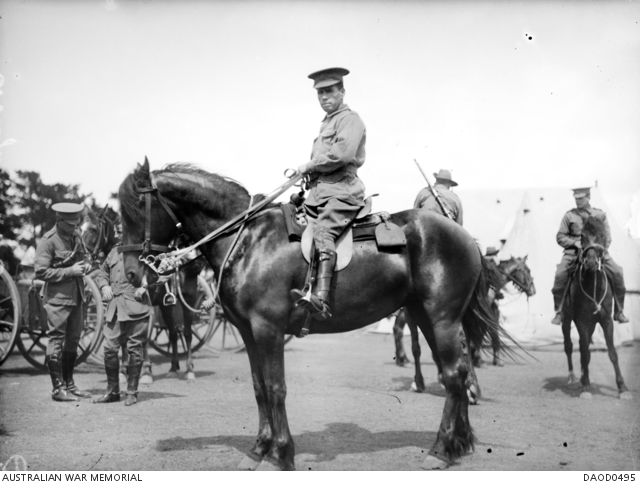
From Waler Data Base @ FaceBook. AWM Image: Portrait of Corrigan on horseback, probably 513 Driver (Dvr) Wilfred Sherwin Corrigan, a commercial traveller from NSW prior to enlistment. Dvr Corrigan embarked from Melbourne with the 2nd Signal Troop, 2nd Light Horse, aboard HMAT Borda (A32) on 22 October 1914. During his service Corrigan transferred to the 1st Divisional Signal Squadron. He returned to Australia on 23 December 1918.
Our FaceBook page demonstrates the unique connectivity of social media, providing a place for like-minded people to learn and share their knowledge about our Waler horses and horse history in general. There was no greater utility horse in the world at the time Australia was being developed, and the exploits of our Light Horsemen are unsurpassed.
In recent weeks we have received an influx of precious family photographs, shared for the enjoyment of all, with whatever information is known about the photograph. As Remembrance Day arrives once again, we remember, and record this history as a practical way of showing that these men and horses are not forgotten.
As well as our Light Horsemen, the collection in this website post includes photographs of working horses from the era of soldier settlers.
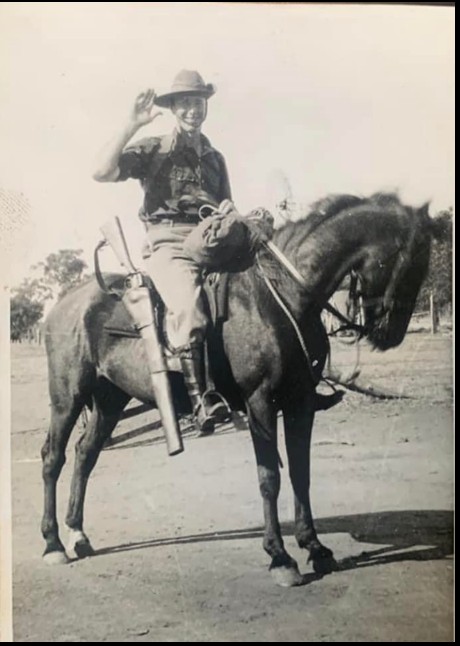
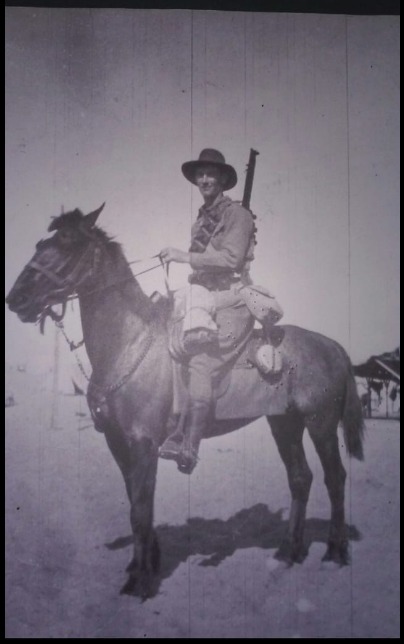
Images above: Captain of the Light Horse in the 1930’s. Photo sent in by Luke Freebairn. He was the grandfather of a person who’d been one of Luke’s customers (great photo, thank you); Beautiful photo sent in by Debra Bullivant of her grandfather – Trooper Townsend of the 12th Light Horse. What a magnificent horse! Always a privilege to see a photo from a private collection, thank you!
This is a great photo of Paul Gray’s grandfather, he was from Adelaide South Australia. Photo taken in England at Salisbury Plains in 1915. He went away in December 1915, and was stationed in Egypt with the 12th Field Artillery Brigade.
The 52nd Battalion was formed in 1916 after Gallipoli was evacuated, and he was transferred there. Then to other Artillery battalions as the army formed more.
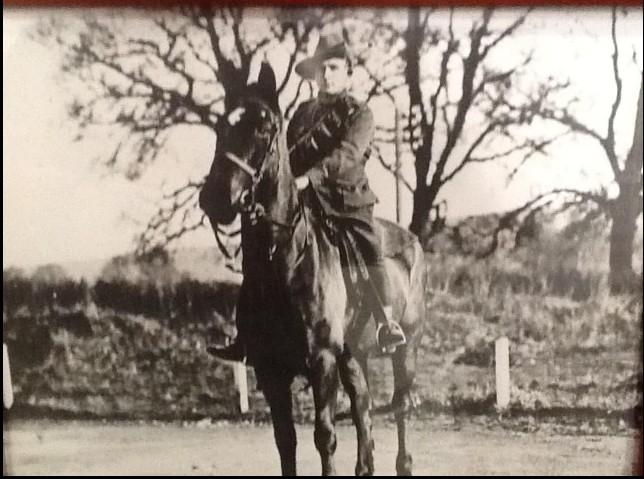
Paul’s grandfather was sent to France where he served with 11th Brigade which operated in France and Belgium, the last Battery of that he served with was the 42nd Australian Field Artillery Battery. Taking those big guns across country and setting them up was a major feat.
Finally discharged 16th June 1919. He’d been gassed and never fully recovered from that, it affected him for the rest of his life. Altogether he’d served three years and 309 days! Thank you so much Paul for letting us see this precious family photo!
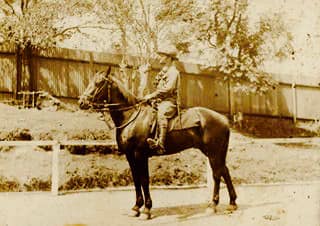
What a fabulous photo sent in by Gary Mulder, of his grandfather, he was in the 2nd Light Horse. The photo was taken at the Toowoomba Showgrounds, they were ready to ship out to war.
Thank you Gary, so wonderful to see these precious family photos.
A wonderful photo sent in by David Macdonald, of his grandfather Trooper Carlton W. Meers of the 12th LH. He was in the charge at Beersheba – this photo was taken at a staging post near Beersheba.
Trooper Meers was from Eurunderee in N.S.W.
Really a privilege to see these beautiful family photos, thank you so much.
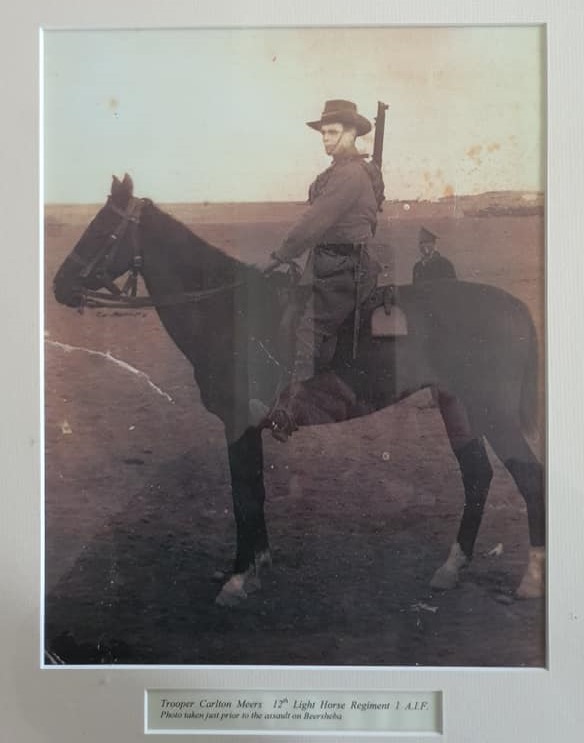
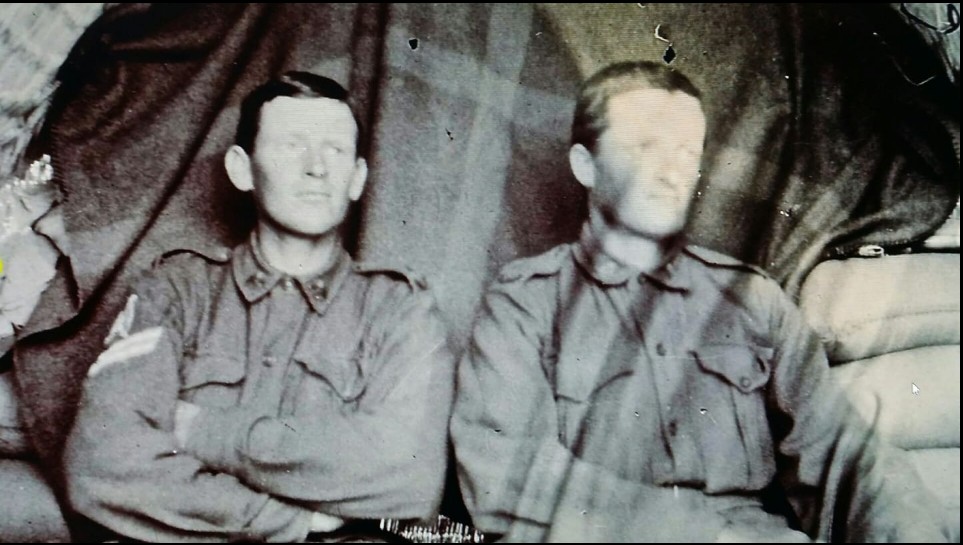
A collection of precious family photos sent in by Phil Wheaton.
The two Wheaton brothers of the 9th Light Horse. They were from South Australia.
Images left and below: Troopers Wheaton: Roy Albert & Claude, 9th Light Horse, WW1.
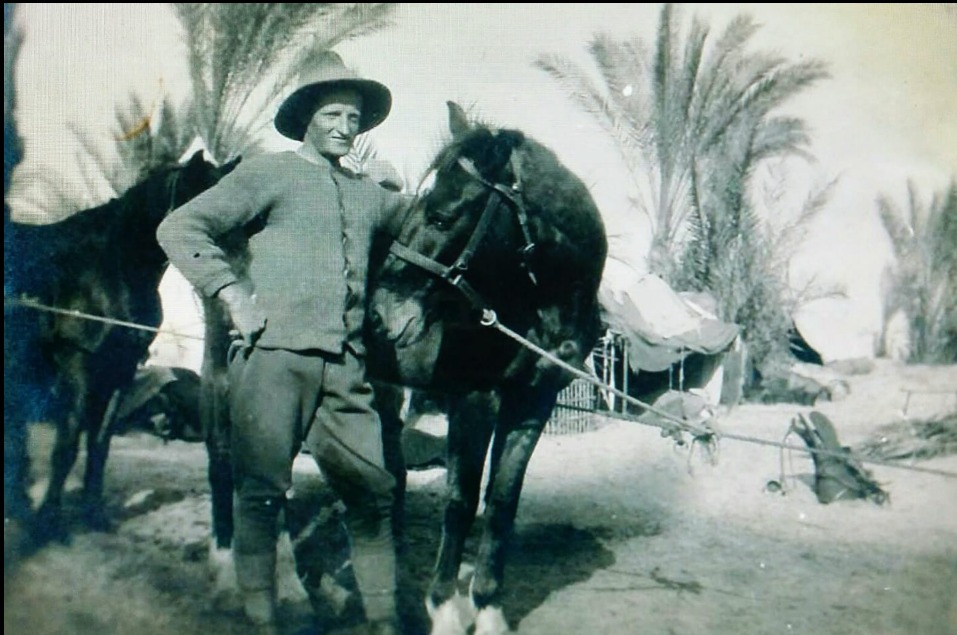
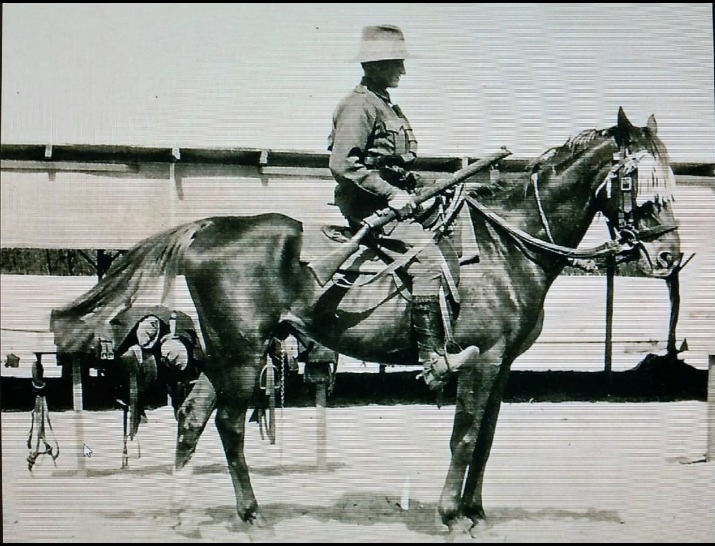
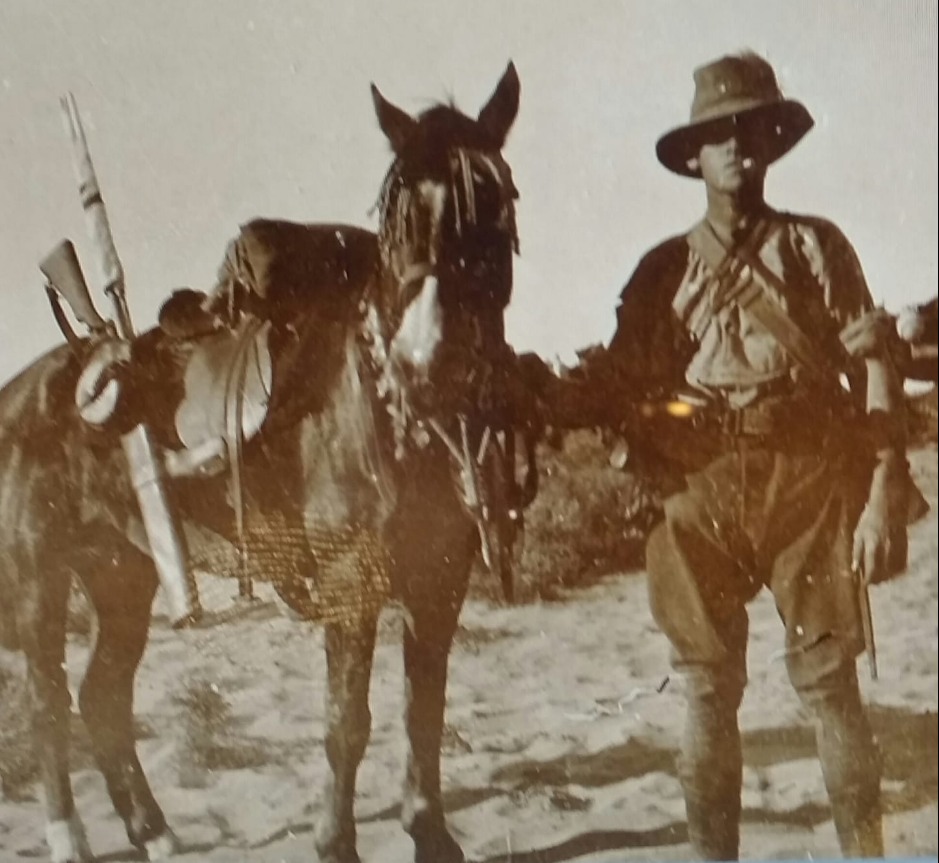
Image: Trooper Roy Wheaton, 9th Light Horse, Phil Wheaton family photo.
Tragically, Roy died in Palestine., in 1917, of wounds.
Earlier, he’d swum a long way off shore to save his Captain who gone for a swim (Egypt) and been swept out to sea. Roy got the Captain back to shore, but he’d drowned. What a strong brave man.
Such a great photo from Paul Johnson of his great uncle, Charles Tudor Johnson, 5th Light Horse. He was a farmer from Victoria.
Truly wonderful seeing these private collection photos, thank you all so much.
Image below is of Paul’s grandfather and two great uncles, Charles with the emu plume, and Esmond. Thank you!
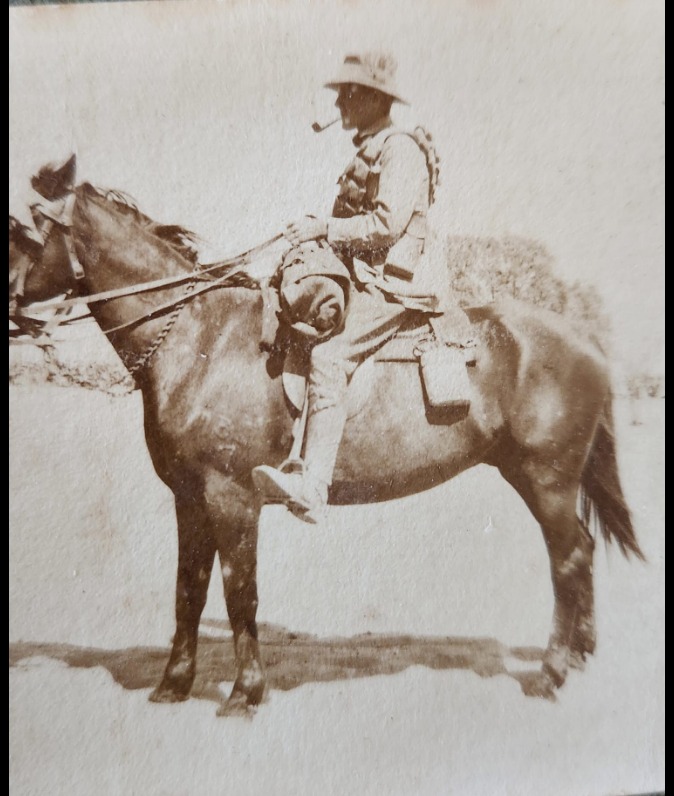
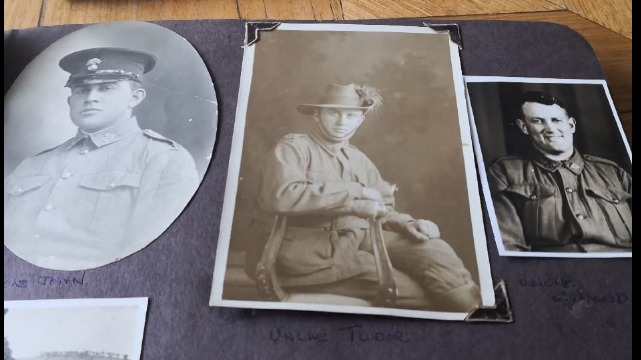
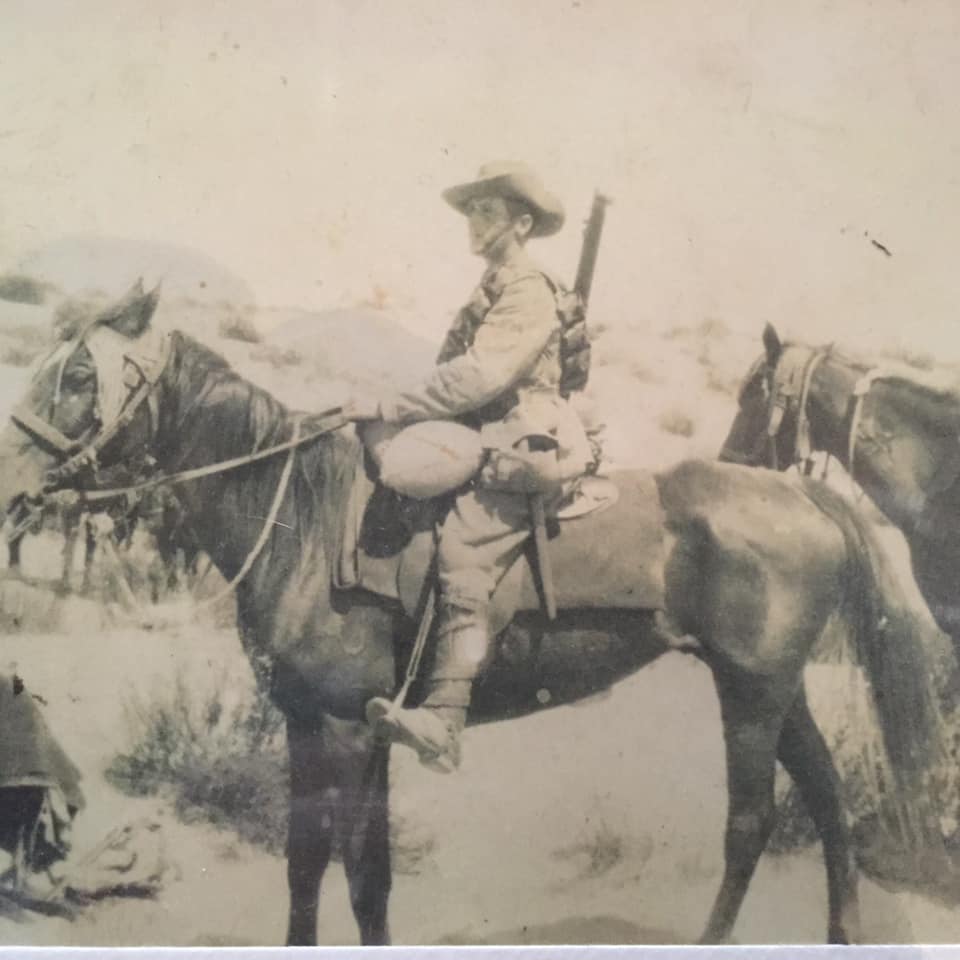
Photo sent in by Donna Jowett Poulos with the caption: “My grandfather – while serving in – I think 1st then 4th Light Horse. He was at Beersheba. Note the very small bag of feed in front of the pommel – they rested during the day and rode a lot when cooler at night.”
A wonderful photo to have, thanks!
Another fabulous photo sent in, this one from Robin Oxenbury from her collection, thank you… In Robin’s words…
“Great uncle, Major Luke Bice 7th Light Horse Regiment. Sinai Desert campaign 1916.
Major Bice (from Inverell, NSW) served also in the Boer War, Gallipoli and the charge at Beersheba in 1917 where this horse, Moscow, was killed.
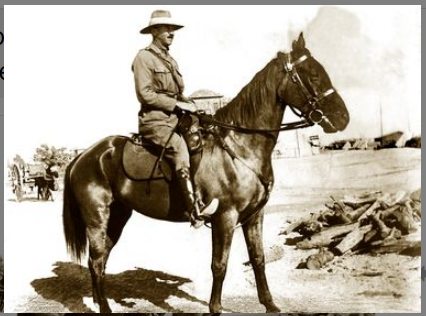
Moscow was, at this time, one of the few of the first regimental horses there. Bred by Alfred Barker at Narrabri, NSW (Sire Rexona). The Thoroughbreds and Waler’s used by the Light Horse regiments were immensely strong mounts with great stamina which contributed substantially to their success.
Luke would have known ‘Banjo’ Paterson, who was in charge of the remounts for the Light Horse. One of those huge Waler’s, that only accepted one man as his rider, was Bill the Bastard. A Memorial in Albury Street, Murrumburrah, commemorates the birthplace of the First Australian Light Horse there in 1897 and features a bronze sculpture of the ‘Retreat at Romani’ which features Bill the Bastard carrying five men from the battlefield.”
Much appreciated, what a great horse! and another Waler name. So sorry he was killed in action. His sire Rexona was unregistered and Moscow looks like a good Waler indeed, whether one uses that term as a breed or type for that era.
Major Bice had been with the New South Wales Imperial Bushmen in the Boer War, at that stage he was a Corporal. He was promoted to Captain while at Gallipoli, and further promoted as the war went on. The 7th LH has the Battle Honours for Beersheba however were not in the big charge with the 12th LH and 4th LH, but had hard fighting in the Battle of Beersheba which was the whole day’s fighting. It is very understandable people think a relative was in the last charge when they know they were at Beersheba. There were several charges that day.
Photos below: Arthur George Tizard, member of 4th Light Horse Brigade, sent in by his grandson Wayne Harris; Phil Bolitho’s great grandfather Lance-Corporal Sidney James Kirwan of the 11th light horse; Reginald Patrick Fraser of the 8th Light Horse, who was at the Charge at Beersheba 1917, sent in by his grandson Mathew Ferg Fraser.
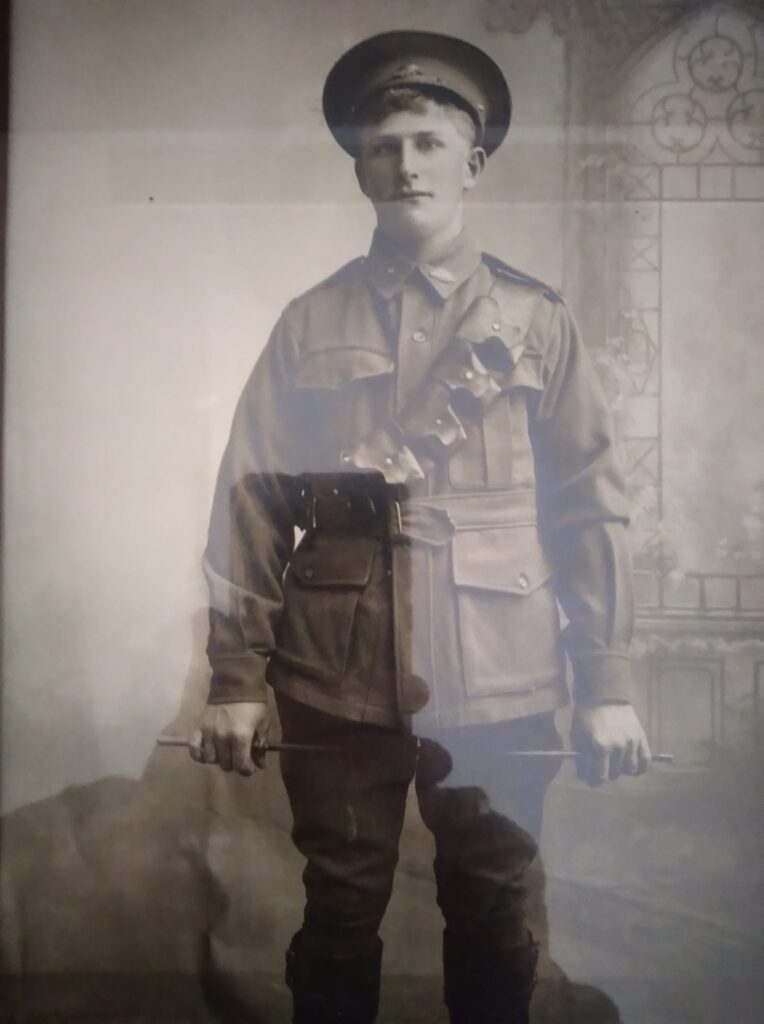
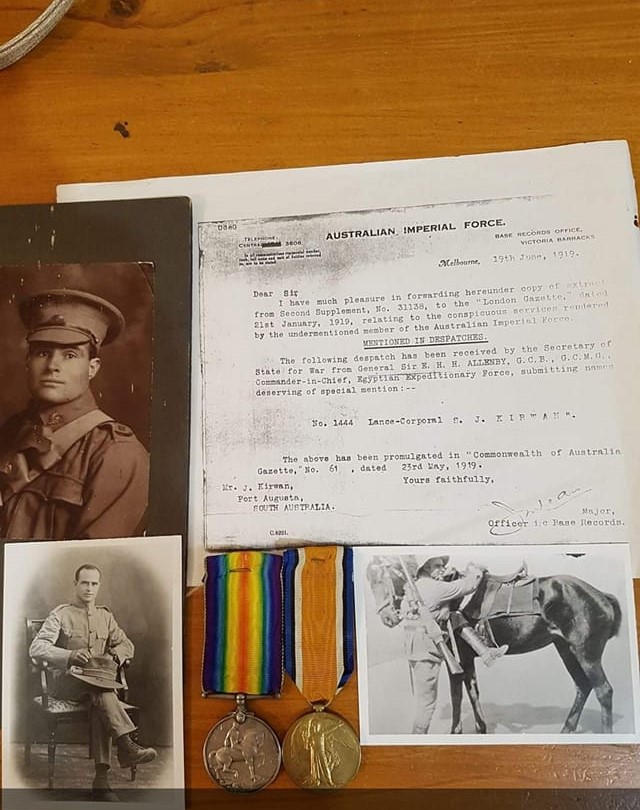
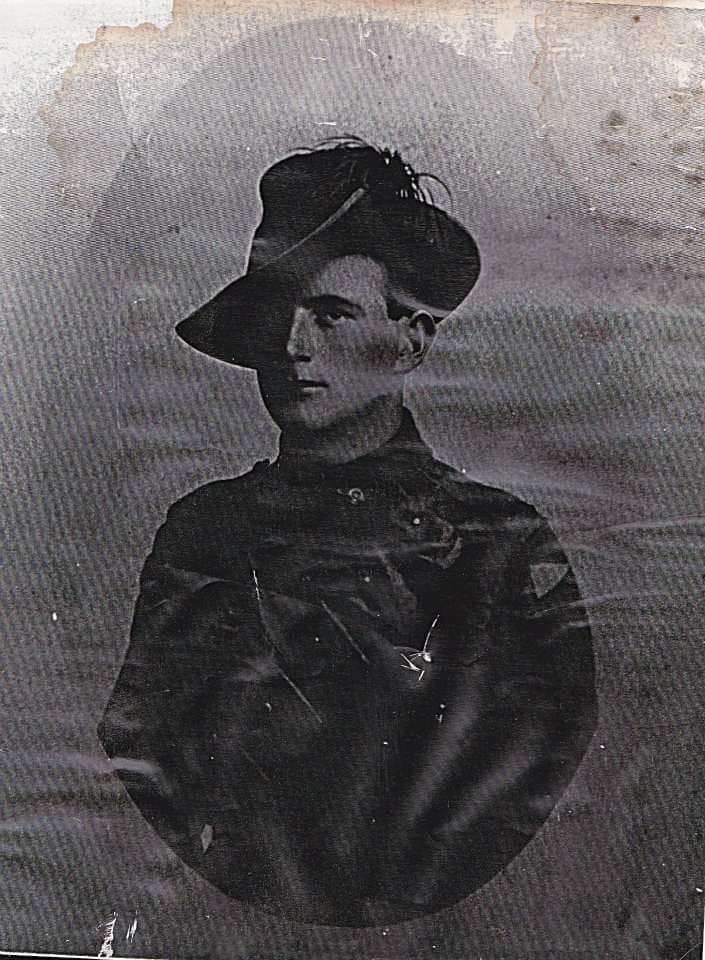
Photos below: Capt Callow, receiving reports from Capt J B Leitch, in charge of the Field Veterinary Hospital, Kilmore camp 1911, after the ambulance accident, sent in by his great great grandson Neville Callow; Charles Moxham, enlisting at “Enogerra Camp, Brisbane 21 September 1914”, sent in by his great grandson Timmy Roland. Absolutely beautiful photos of the times, thank you so much for sharing Neville and Timmy! So good having all these amazing glimpses of our history, thank you all!
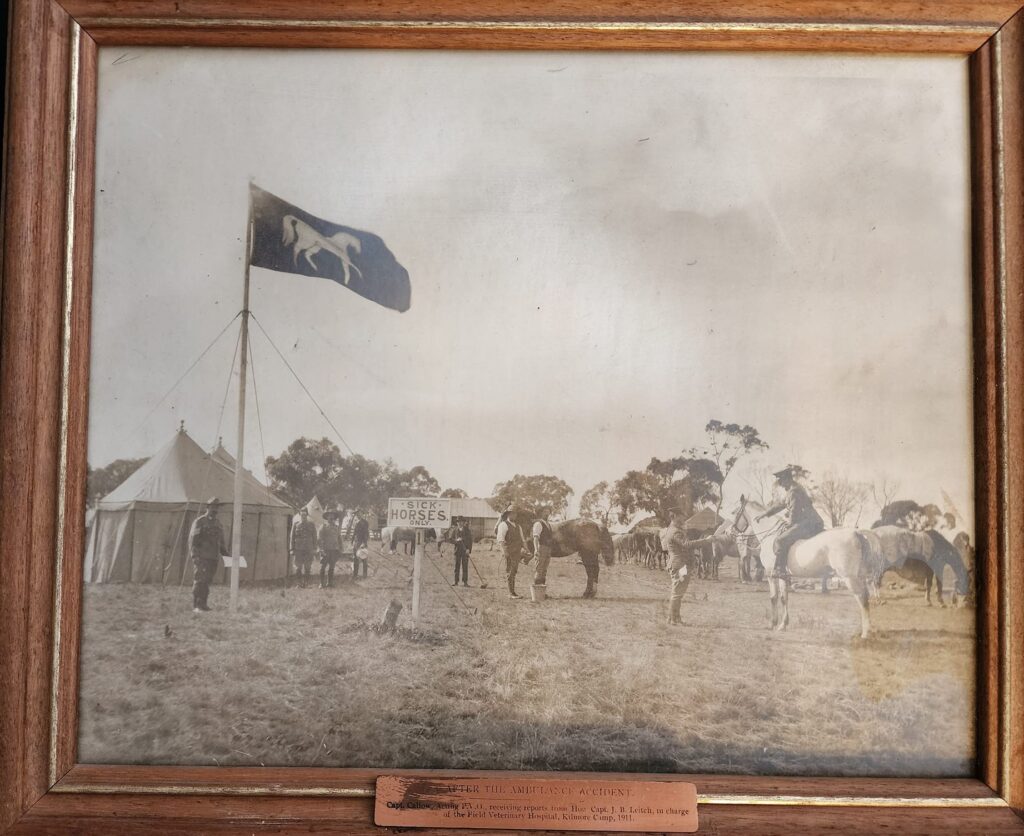
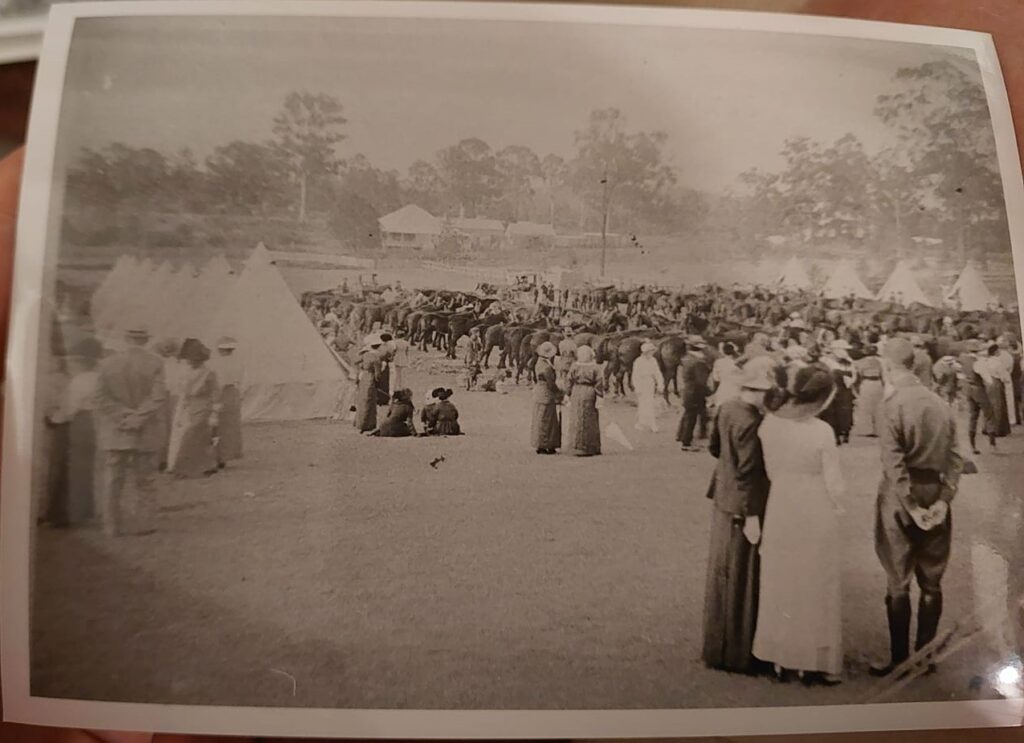
The image below is a fabulous family photo from Geoff Davies of his grandfather Peter Campbell MacFarlane, a drover, of Nareen in Victoria.
In WW1 Peter joined the Light Horse at the age of 43. However after six months he was given an honorable discharge – his back couldn’t handle the marching. A life of hard work had taken its toll. Perhaps it even saved his life.
Look at the beautiful condition of his horses! Thank you so much for sharing Geoff, he’s a true horseman.
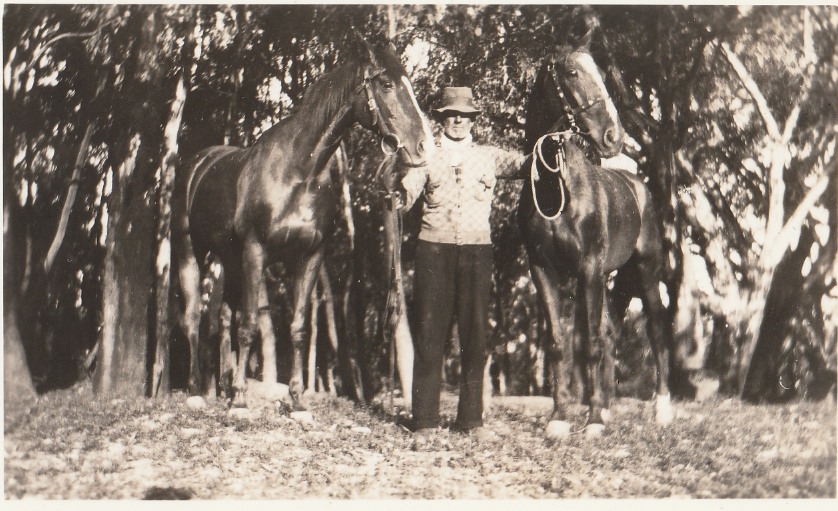
Image below: A team of horses on the Mallee. Photo was sent in by Amanda Cunningham, she took it on her phone at a friend’s place. Super photo, thank you.
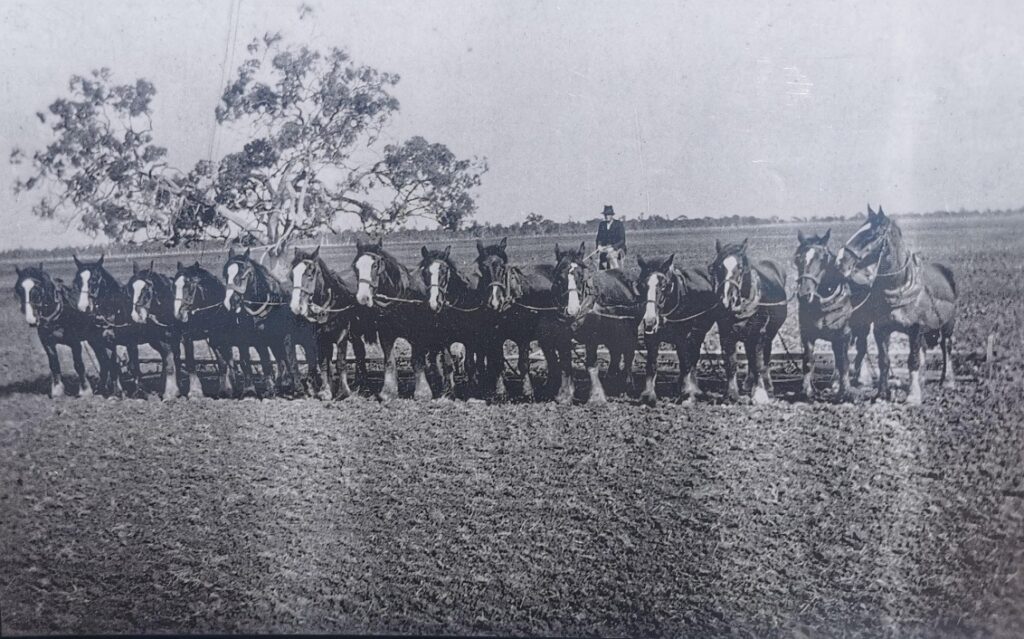
Now identified, thank you Kenn Rogers! It’s Kenn’s father, harrowing at Yurgo in the Mallee. At lunchtime, his Mum took a fresh team of horses out to his Dad and brought in the morning team for water and feed. They were fresh for the next day. “Those were the days!” says Kenn. Indeed – well done!
The Mallee is marginal country in Victoria running through to South Australia. Most of it was sold to returned soldiers on low interest loan after WW1, in blocks of 600 to 800 acres, some of 320 acres, along with a loan of 500 pounds for horses and basic farm equipment to start working it The Act of Parliament was made in 1916 and revised in 1917.
Nonetheless it was extremely hard to make a living. Water was essential, it being an extremely dry area. Despite working extremely hard, not everyone succeeded in making a living.
This soldier-settler scheme was a great market for horses, particularly draughts, and Clydesdale people would recognise many and their crosses in photos of the Mallee back then.
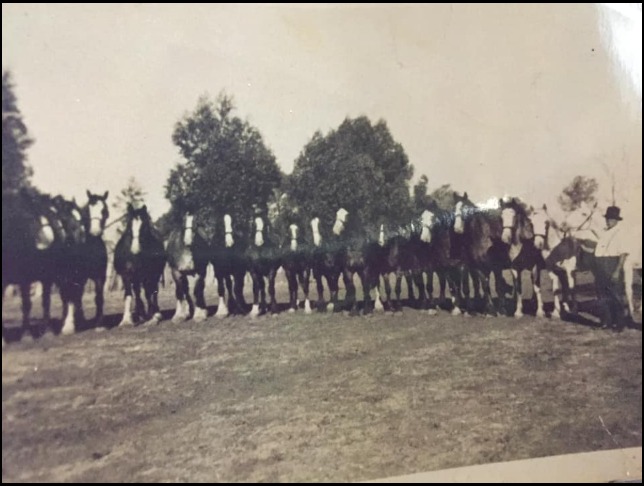
The image above is a photograph from Pauline Liekefett of her grandfather’s team at Katyil in the Mallee country of Victoria, a tough, hot, dry area. He was a hard worker and Pauline is rightfully very proud of him. What wonderful horses!
Not all horses on our FaceBook page are Walers, we post horses of the past in Australia to show what was about, what they did, and how an Australian utility horse came about from what was here. Obviously Clydesdales were very popular, and thankfully still have keen fans keeping this old breed going here.
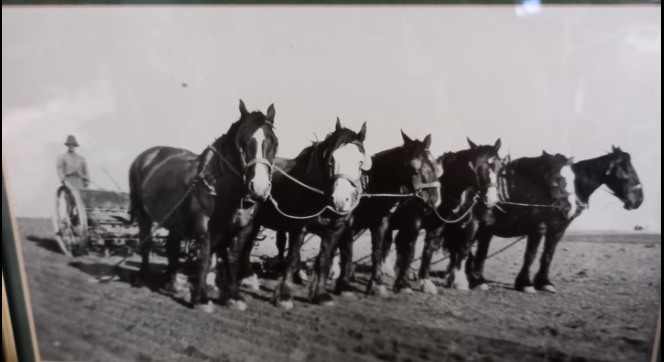
Great photo sent in by Chris Grylls, of his Pa and his horse team; Trimble Road, Ouyen, in the Mallee, 1940’s-50’s era.
Thank you for sharing!
Lovely work horses, look like Clydesdales.
Below images are gorgeous photos also taken in the Mallee of their grandfather’s horses, sent in by Lynne Davies and Judy – and also sent in by Moe Elizabeth, he’s her great grandfather; 1940’s era.
Thanks so much, great to see private photos, very precious, and a fabulous record of our history.
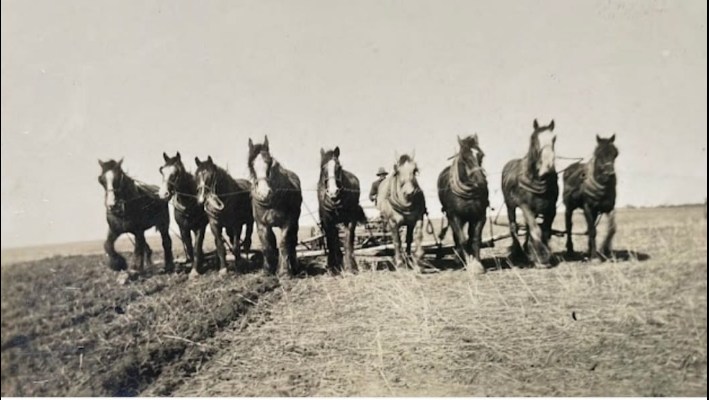
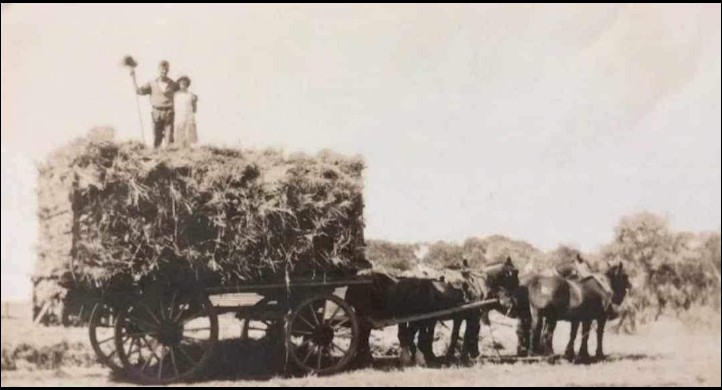
Thank you again to all those who made contact for allowing us to see these photographs from private collections. Let’s not forget.
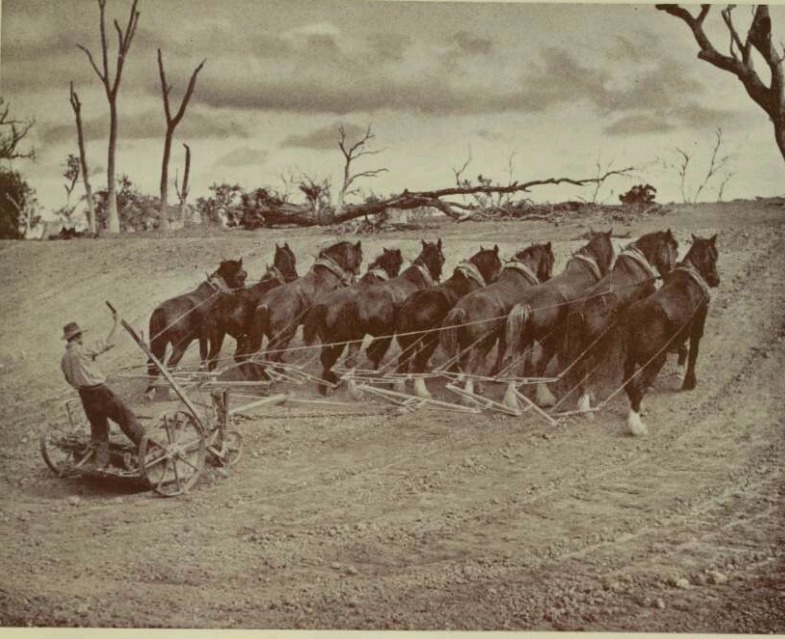
Image above: Team work. A ten horse team scooping an irrigation channel at Heyfield,* Victoria. Photo by F. C. Johnson. Walkabout, 1st September, 1949. Identified from our FB post by Michael O’Brien as his grandfather, he also used his teams elsewhere.